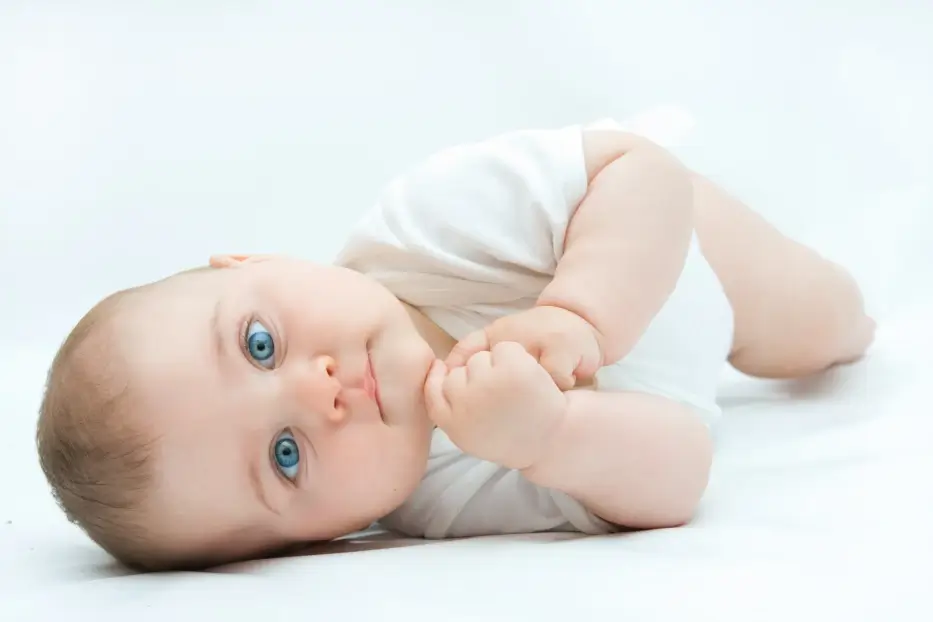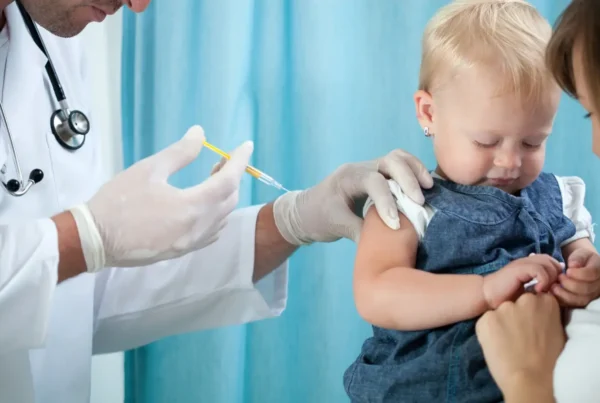The first year of a child’s life is a period of exceptionally dynamic development. Not only does a baby double its birth weight and grow an average of 25 cm, it also acquires many skills. The parents’ task during this time is to take care of the health and support the baby’s development.
Milestones in the 1st year of life
Skills like the first smile, the first step, or waving goodbye are called developmental milestones. The child development calendar presents them in the form of tables, in which next to the skill there is a provision indicating the approximate age at which the child should acquire it. The word “indicative” is important because each baby develops at his or her own pace.
Developmental milestones concern all areas: motor development (e.g. sitting up independently or crawling), cognitive development (interest in toys, learning), social development (first smile, speech development) and emotional development (e.g. separation anxiety).
Baby development month by month
In the first month of life, the newborn mainly lies on its back, but in this position it exercises its muscles: it swings its limbs, although it does not do it consciously, it is no longer curled up like an embryo, but stretches its limbs. The first weeks of life are a time when a newborn’s main way of communicating is crying, which communicates hunger, tiredness, and boredom. He calms down when he is rocked or when he is provided with conditions reminiscent of the fetal period – warmth, darkness, quiet noise and being wrapped tightly give him a sense of security. In the first month, a baby is guided by reflexes – it looks for the breast, reacts to stimuli such as a loud noise, the mother’s voice or her smell. In the 2nd–4th month of life, the baby’s body is stiffer, the baby learns to keep its head vertical, turn from the tummy to the back and support itself on the forearms when lying on its tummy. The baby’s social and emotional development is also visible – it begins to recognize its loved ones, babble, and communicates with them by waving its arms and legs. He cries when he can’t see his mother, but smiles when she approaches him. He begins to understand that his screaming causes his parents to react.
The age of 4-6 months is a period of important stages in a child’s development: learning to sit, lean on straight arms, and turn around its own axis. Your baby reaches for objects and grabs them, and his fingers learn to manipulate them. Uses gestures – stretches out arms when he wants a cuddle, imitates sounds and facial expressions of adults. Laughs loudly, follows objects and people with its eyes. In the 6th–8th month of life, the baby begins to assume a crawling position – when sitting, it supports itself on its hands and rocks forward. It also helps him reach for toys that are further away and he can transfer them from hand to hand. The child increasingly communicates using syllables: dada, mama, baba… He can play peek-a-boo and throws objects on the ground to observe the effects of his actions. Baby responds to his/her name.
An 8-10-month-old baby walks on all fours and also tries to pull itself up to a standing position, e.g. in a crib. His hands are practicing the pincer grip – he grabs small objects with his index finger and thumb. During this period, children drink from the bottle on their own and nibble on crisps. They speak their language a lot and loudly, training their vocal abilities. In the eighth month, the baby associates words with objects and understands that he and his mother are two different people, which is why the tenth month is the peak of separation anxiety.
In the last months of the first year of life, the baby crawls, the stronger babies try to stand on furniture and take their first steps, and climb onto the couch.
At 10 months of age, your baby points to objects that you name with his or her finger, can play with large blocks, sorters, turns the pages of a book and points to a dog or a cat drawn on them. He can imitate their sounds. He is afraid of strangers and can find toys hidden under his diaper because he understands that even though he can’t see them, they still exist. Carry out simple requests, e.g. give me the ball.
Proper diet in the 1st year of life
A baby is developing rapidly, so it needs proper nutrition. According to the recommendations of the World Health Organization, babies up to 6 months of age should be exclusively breastfed. In the second half of their life (regardless of the type of milk they drink), they should have a supplementary diet.
The consistency of the first solid meals must be adapted to the child’s abilities: the first meals should be in the form of purees, then paps, and finally small pieces. Currently, specialists do not specify when to introduce products, but they recommend expanding the diet to start with vegetables and fruit, then cereals, and then meat, dairy products, and fish. The introduction of potentially allergenic products (such as eggs or gluten) should not be delayed – studies have shown that this does not positively reduce the risk of allergies. Gluten should be introduced into your baby’s diet between 17 weeks and 12 months of age.
Balances and vaccinations
Immediately after your baby is born, you should register him or her with a pediatrician at a primary care clinic and then go for regular check-ups and vaccinations. Children in the first year of life, according tothe vaccination schedule, should receive vaccines at 2, 4, 5-6 and 7 months of age. Every 1-2 months, the baby should be examined, measured and weighed by a pediatrician, who will assess his condition based on centile charts and observations of the baby. This is the so-called health balance. The pediatrician will provide advice on the child’s nutrition, correct the parents’ mistakes and suggest how to properly support the immune system, and check whether development is proceeding properly. You must return your child for subsequent assessments after they turn 2 years old, then at preschool age: at ages 4, 6, 10, 13, 15 and 18.



